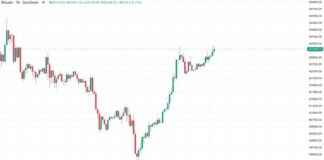A recent report from Security Token Market has projected a significant surge in asset tokenization, with estimates reaching $30 trillion by the year 2030. This growth is expected to be driven primarily by the tokenization of stocks, real estate, bonds, and gold. The wide range of forecasts provided by various consulting firms and financial institutions, ranging from $2 trillion to $16 trillion, highlights the uncertainty and complexity surrounding this emerging trend. Since 2017, there have been numerous trials and initiatives worldwide aimed at tokenizing various asset classes, resulting in over $50 billion in tokenized stocks, bonds, and real estate. Major financial institutions such as BlackRock, Franklin Templeton, and Apollo have also begun investing significantly in this space, signaling a shift towards mainstream adoption.
Stablecoins and the Path to $30 Trillion
The current landscape of tokenized assets stands at over $250 billion, including stablecoins and other digital assets. With the recent regulatory clarity around cryptocurrencies in the United States, there is a newfound optimism and support for stablecoins as a means to enhance the dominance of the U.S. dollar globally. This administration’s recognition of the potential benefits of stablecoins in strengthening the dollar’s position as the world reserve currency sets the stage for significant growth in this sector. The forthcoming legislation aimed at providing clarity on token classifications and stablecoin market structure is expected to pave the way for blockchain integration into capital markets in the U.S. This legislative support, coupled with the commercial adoption of stablecoins and the rising demand for on-chain yield, could propel stablecoins and yield coins to a valuation of $3 to $5 trillion by 2030.
The Inevitability of Tokenization
Despite initial skepticism, industry leaders such as the CEOs of BlackRock and J.P. Morgan have embraced the concept of asset tokenization, recognizing its transformative potential in the financial sector. While some may question the feasibility of tokenizing trillions of dollars worth of assets, the momentum behind this movement is undeniable. The convergence of blockchain technology, regulatory support, and market demand is driving the tokenization of a wide range of asset classes, from stocks and real estate to commodities and bonds. The shift towards on-chain transactions and the utilization of stablecoins as settlement solutions are reshaping the financial landscape, offering a glimpse into the future of finance.
As the tokenization revolution unfolds, the forecasted $30 trillion valuation by 2030 appears increasingly plausible. The acceleration of asset tokenization is not only a testament to the evolving financial ecosystem but also a reflection of the growing acceptance and understanding of blockchain technology within traditional finance. With regulatory clarity, government support, and market demand aligning in favor of asset tokenization, the path to trillions in tokenized assets seems more promising than ever. As we navigate this paradigm shift in finance, the opportunities and challenges presented by asset tokenization will continue to shape the future of the global economy.
Herwig Konings, a seasoned expert in equity crowdfunding and compliance software, offers valuable insights into the evolving landscape of asset tokenization. His extensive experience in the industry and pioneering efforts in the tokenization space underscore the transformative potential of blockchain technology in redefining traditional finance. Through his expertise and vision, the journey towards trillions in tokenized assets is not just a possibility but a tangible reality on the horizon.


















